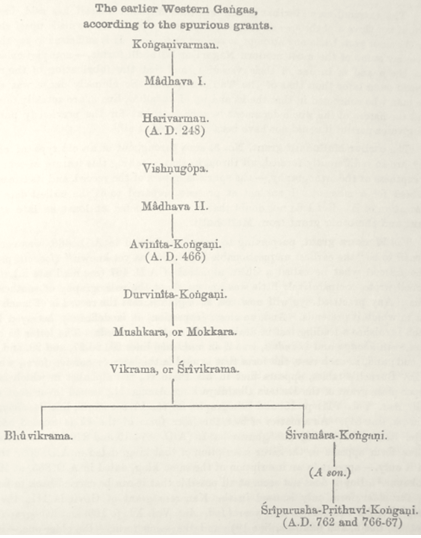|
The Indian Analyst
|
North Indian Inscriptions |
SPURIOUS SUDI PLATES. The earlier Western Gaṅgas,
_________________________________________________________________ Museum grant, it may be added that portions of the text are bodily misplaced ; and the context is so mixed up that, without the other records as a guide, most of it would be hopelessly unintelligible. ......The next point to command attention is the palæography of the grants, as far as published lithographs are available. ......The Tanjore grant purports to have been issued in A.D. 248. But every character in it betrays a far later date ; and, taken all together, they point to the tenth century A.D., as the earliest possible period for the fabrication of the record. This was recognised by Dr. Burnell (South-Indian Palæography, pp. 34, 35, and Plate xi.), who classed the alphabet among the Grantha-Tamil alphabets, and expressed the opinion that the documents,— distinctly styled by him “a forgery,”— shews the condition of the northern Chêra characters about the tenth century. A most tell-tale character in this record is the l : it is distinctly a Grantha character of a late type ; and the only approximation to it, that I can find , is in the Grantha alphabet exhibited by Dr. Burnell in his Plate xiv., and allotted by him to A.D. 1383.
| |||||||||||||||||||||||||||||||||||||||||||||||||||||||||||||||||||||||||||
| > |
|
>
|








